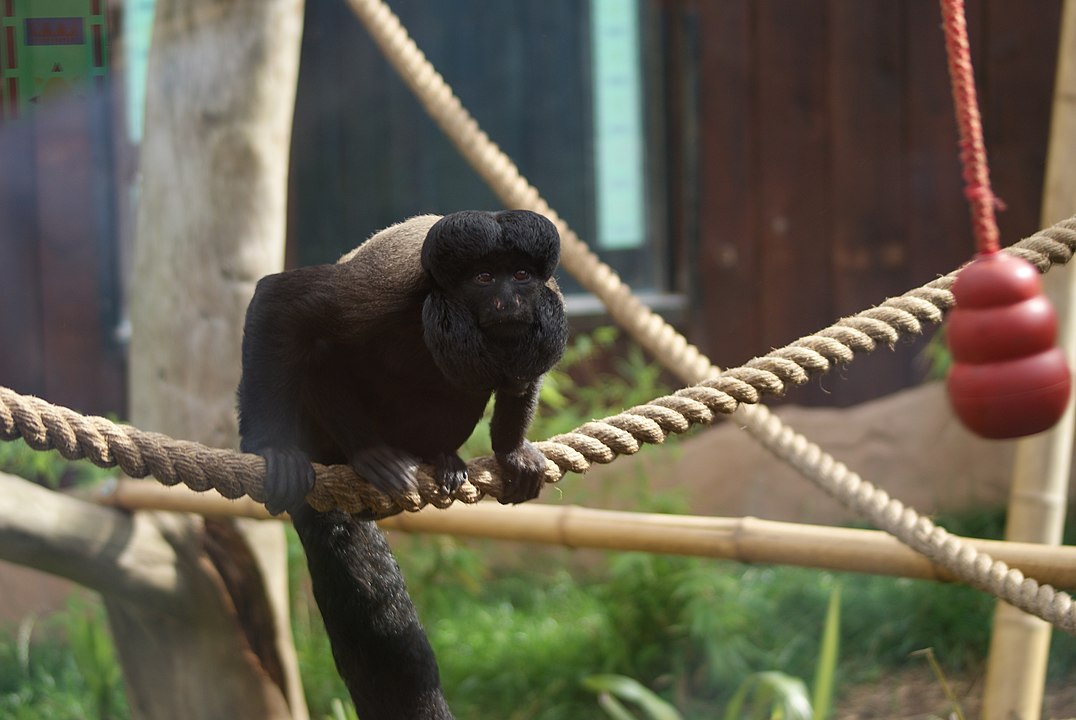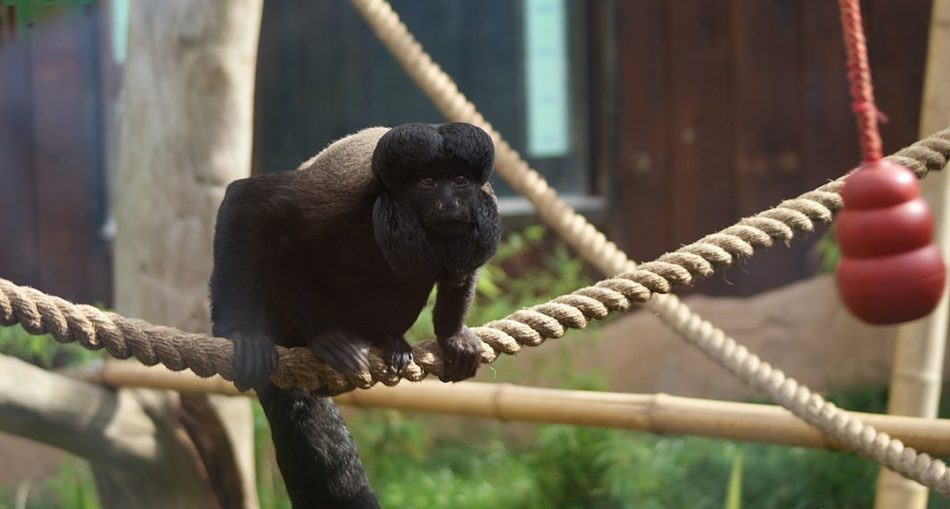The Red-Backed Bearded Saki are medium-sized monkeys, who tend to spend their days swinging high up in the canopy of rainforests in search of food. This primate is native to the New World, in places like north of the Amazon River, East of the Branco River, Guyana, French Guiana, Brazil, and Venezuela. The scientific name of the Red-Backed Bearded Saki is Chiropotes chiropotes however, there are no other common names. Read on to find out about this rare and interesting primate.

The Red-backed Bearded Saki – Photo By Craig Sladden – Flickr, CC BY 2.0, https://commons.wikimedia.org/w/index.php?curid=27022975
Features Of The Red-Backed Bearded Saki
- Sexual dimorphism: Females are generally smaller in size when compared to their counterparts.
- Hair: The Red-Backed Bearded Saki is noted for its peculiar hairstyle. The hair on the top of their heads is split in half, with two rounded tufts of hair. While both are covered in dense hair ranging from yellowish gold to red, the males typically have thicker hair. The male also has a thicker beard.
- Weight: The average weight of the species ranges from about five to seven (7) lbs.
- Length: Females, are usually smaller than the males who are about forty-five (45) cm long.
- Tail: The tail of this primate is typically bushy, non-prehensile, and have a length to match its body. The young have a prehensile tail and uses it to cling to its mother or caregiver.
Scientific Classification Of The Red-Backed Bearded Saki
- Kingdom: Animalia
- Phylum: Chordata
- Class: Mammalia
- Order: Primates
- Suborder: Haplorhini
- Infraorder: Simiiformes
- Family: Pitheciidae
- Genus: Chiropotes
- Species: C. chiropotes
Habitat Of The Red-Backed Bearded Saki
The Red-Backed Bearded Saki are arboreal, which means they live in trees. As such, they can be found in the upper rainforests, which are next to a water source like streams or rivers.
Diet Of The Red-Backed Bearded Saki
The Diet of the Red-Backed Bearded Saki consists mainly of the fruits, seeds, flowers and nuts of about one hundred (100) plant species. However, they also feed on insects, larvae and spiders.
Interesting Tip
- The Red-Backed Bearded Saki has dental adaptations which help them to crack the pods of many plants and eat.
- The first zoo in the United Kingdom to breed the Chiropotes chiropotes species was the Belfast Zoo.
Behaviour Of The Red-Backed Bearded Saki
Like all members of the Chiropotes genus, the Red-Backed Bearded Saki, the primate is diurnal. This means you will find them moving about and generally, being active from the period of sunrise to a little before sunset. Red-Backed Saki monkeys live in large groups of approximately forty (40) individuals, of both genders. They are sometimes divided into cluster when on the move or looking for food, their main objective. Their sturdy hind legs enable them to move easily journey through the forests and to jump a very long distance. It is a general belief that Red-Backed Bearded Sakis sleep high up in the forest canopy, with their tails curled around their body.
Reproduction Of The Red-Backed Bearded Saki
The Red-Backed Bearded Saki has a gestation period which lasts about five (5) months. The female typically gives birth to one cub, during the rainy season. The young cling to its caregiver for the first two (2) months before learning to move on its own.
About The Red-Backed Bearded Saki
While the Red-Backed Bearded Saki monkeys are occasionally hunted for their meat, they are not an endangered species. You can distinguish them from other bearded Sakis by the unique tufts of hair on their heads which is split into two puffs. They use their teeth to crack the pods and are often spotted high up in trees.
Article References
- http://www.belfastzoo.co.uk/animals/red-backed-bearded-sakis.aspx
- https://dwazoo.com/animal/bearded-saki/
- https://animals.fandom.com/wiki/Red-backed_Beardwhed_Saki
- https://en.wikipedia.org/wiki/Red-backed_bearded_saki
- https://www.inaturalist.org/taxa/74186-Chiropotes-chiropotes
- https://dwazoo.com/animal/bearded-saki/#:~:text=Description%3A%20Red%2Dbacked%20bearded%20saki,them%20a%20unique%20hair%20style.







